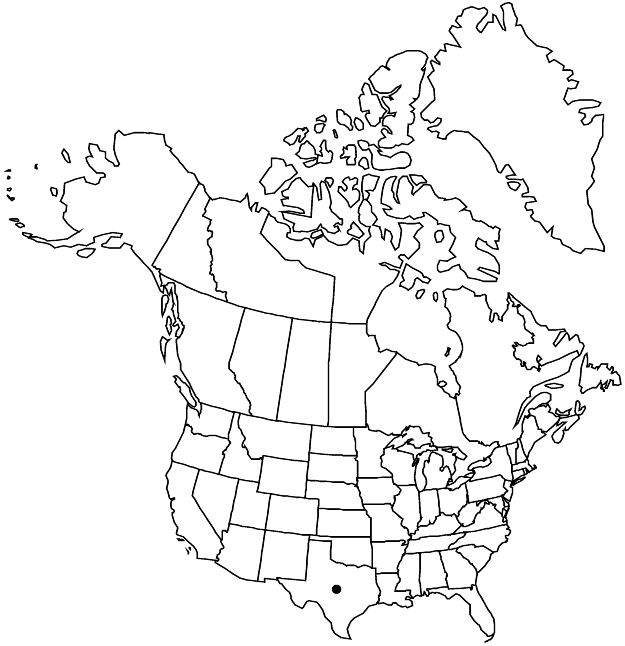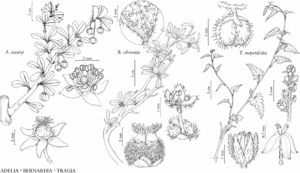Adelia vaseyi
Pflanzenr. 63[IV,147]: 69. 1914.
Shrubs, 1–2(–3) m; bark gray to brown, branches usually ascending. Leaves: petiole 0.2 cm; blade pale green, spatulate to obovate, 2–3(–4) × 0.5–1 cm, base cuneate, apex usually rounded, rarely emarginate, surfaces glabrous; 3-veined at base, secondary veins 4–7 pairs. Inflorescences 1–3-flowered. Pedicels: staminate 2 mm, pistillate 3–5 mm in flower to 20 mm in fruit. Staminate flowers greenish white; sepals lanceolate, acute, 2 mm, hairy; stamens whitish; filaments 1.5 mm; pistillode 3-parted. Pistillate flowers yellowish green; sepals reflexed at anthesis, ovate to lanceolate, acute, 2–-3 mm, puberulent; ovary 1.5–2.5 mm diam.; styles 2 mm. Capsules subglobose, 1–-1.3 cm diam., hairy. Seeds 4–-5 mm.
Phenology: Flowering Jan–Jun, fruiting Jun.
Habitat: Subtropical semideciduous woodlands on loamy soils, occasionally shrublands on sandy to gravelly soils.
Elevation: 10–100 m.
Distribution

Subtropical semideciduous woodlands on loamy soils, occasionally shrublands on sandy to gravelly soils, Tex., Mexico (Tamaulipas).
Discussion
In the flora area, Adelia vaseyi is restricted to the lower Rio Grande Valley (Cameron, Hidalgo, Starr, and Willacy counties), where much of its habitat has been destroyed.
Selected References
None.
